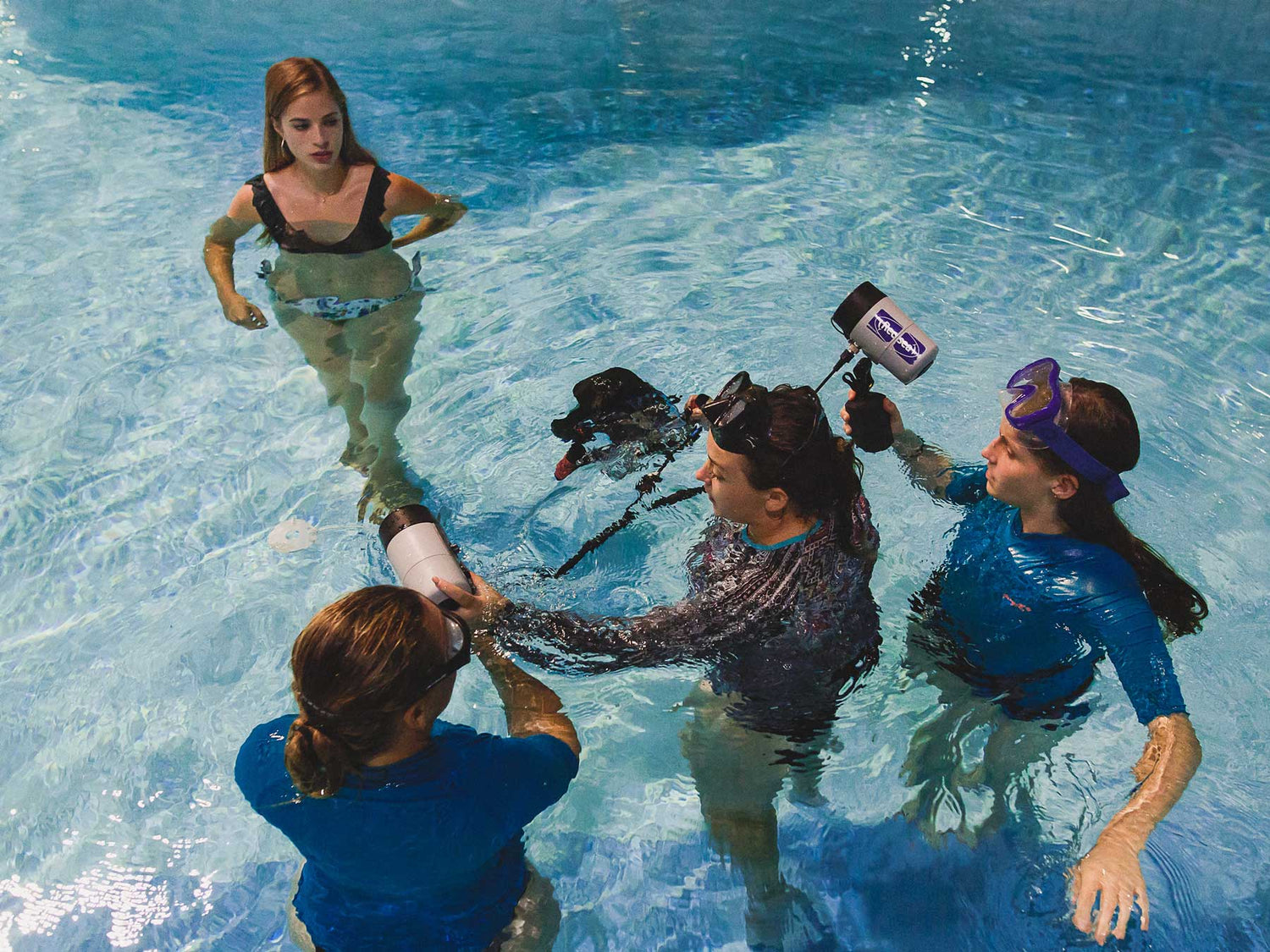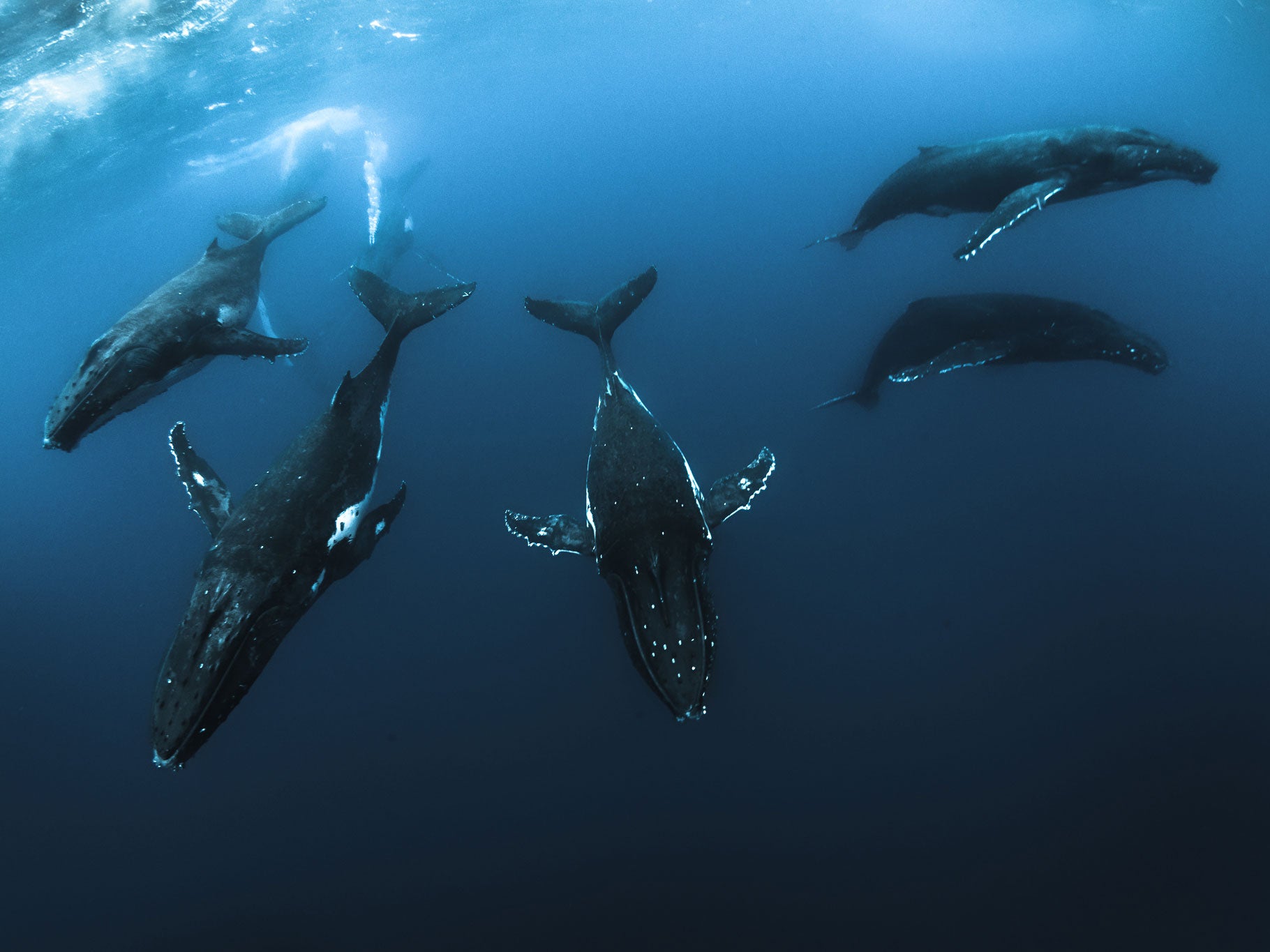Not unlike learning to snow ski, direct instruction from a professional is one of the fastest ways to looking like you know what you're doing with underwater photography. Ambassador Alison Bounce frequently travels to do underwater maternity shoots for clients around the world.
Now she also offers training to aspiring underwater photographers via workshops where she shares her secrets for creative and very not-boring underwater portrait photography. We touched bases with Alison to learn more about the process of getting into underwater portraiture.
How long have you been teaching workshops and mentoring new photographers?
I've been teaching underwater photography for almost 2 years now. I started in Paris with my friend Delphine. We made a special classroom for basics underwater skills. Then in 2019, I received many inquiries for international masterclasses. So I am now traveling the world to teach underwater light and open-water photography.
Everyone has different goals related to underwater photography. What brings people to your workshop?
Most of my students are curious about underwater photography. They have no idea about how I capture and manage my underwater business. I share everything they need to start their activities: safety, technicals skills, post producing and workflow.
Some of them are looking for a new specialty. They are bored and would like to offer something new to their customers. Underwater photography is unique and can be epic. So that's really perfect for them.

What kind of investment in equipment is necessary to get started?
Honestly, only an underwater housing and a dome. Nothing else.
I started with my Canon EOS 6D DSLR and Canon EF 17-40mm f/4L lens with an Ikelite system. I kept this combo 2 years before switching to my Canon EOS 5D Mark IV and two DS161 strobes.
In my opinion, expensive equipment doesn’t help so much when you start. If you want to keep safe, minimalist gear is better. It's more comfortable and easier. After training by practice and practice, you may add some lights. For my part I invested in two D161 strobes and that really enough for my work.
What lenses do you prefer?
For sure my Canon EF 35mm f/1.4. That's my favorite for portrait. I use it with a flat port and I really like the results.
How do skills learned in the pool translate to open water?
It's a little bit different but it's safer to learn in pool first. Especially if you shoot pregnant women. It's not just photograph them, it's also take care by protecting them. Starting directly in ocean seems to be dangerous with currents, waves, deep and underwater life. It's more comfortable to understand underwater rules in pool. The clarity and light are often better in pool than ocean too!

Do you think one needs to be good at topside photographer to be good underwater?
Actually a good technical topside photographer can also be good underwater. Technical skills can be learn by everyone. The huge difference between the two types of photography is the underwater fluency. If you are not comfortable in water, the task will be really hard.
The second point is, in my mind, the creativity. Underwater, photographers can quickly use all posing, composition, and scenes possibilities. You have to create all the time and make something different. For my part, I am not shooting underwater. I am using water to shoot.
What do you think is the most important area of marketing for an underwater photographer today?
There is no best way to market underwater photography. It's really similar than for topside. Actually the best media to promote photography activity is Instagram and a really good SEO (search engine optimized) website.
What is your favorite part of the workshop to teach?
Creation. I love to share how I imagine my underwater session. Sharing tips and details. The students are always surprised by that. At this moment, how much hard work and effort goes into my underwater shoots. That why I like to teach. It's not only for the students. I also improve myself during my workshop.

When are your upcoming workshops?
New Caledonia : October 2019
French Polynesia : November / December 2019
Reunion Island : April 2020
Paris : 2020
What are you working on now?
From October 2019 to March 2020 I am going to travel the world by making my second world tour. Before I go, I organized a retrospective of my last 4 years work. It will be on Thursday October 3rd in France (Valence). When I return, a new exhibition will open. I can't talk about the subject but it's a two years work around women and travel.
Follow Alison's work on Instagram @alisonbounceunderwater
All photos copyright @ 2019 Annie Gozard
 Ambassador Alison Bounce was freediving in the Philippines when she saw a pregnant mother playing with her son in the water. It was a revelation. She returned to France and started developing her techniques and setting up a service combining photography with the underwater world. Now a specialist, Alison travels the world doing sub-aquatic shoots and teaching underwater photography through her workshop series. Read more...
Ambassador Alison Bounce was freediving in the Philippines when she saw a pregnant mother playing with her son in the water. It was a revelation. She returned to France and started developing her techniques and setting up a service combining photography with the underwater world. Now a specialist, Alison travels the world doing sub-aquatic shoots and teaching underwater photography through her workshop series. Read more...
Additional Reading
How Underwater Maternity is Different From Topside
Diving Into Underwater Portraiture Significant Moments 2019 Workshop
Jenna Martin's TEDx on Becoming an Underwater Portrait Photographer












![Yellowstone Invader | The Destruction of Non-Native Lake Trout [VIDEO]](http://www.ikelite.com/cdn/shop/articles/ashley-siana-yellowstone-invader_76c237b0-b5f4-45f1-a0a0-7f89a8881e35.jpg?v=1645896110&width=2000)
